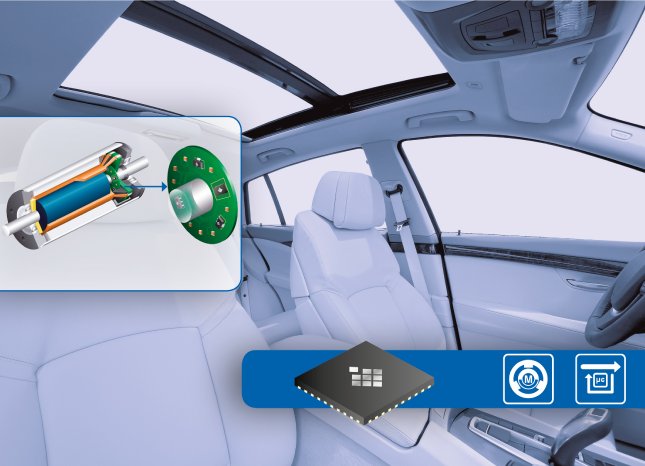This new family from Micronas enables very compact implementations of complete motor servo controllers. All devices are designed to be directly connected to the motor windings without the need for external MOSFETs and can further be directly supplied by the 12 V car batteries without the need for external voltage regulators. The internal LIN transceiver allows the direct connection to the LIN bus. In addition, all family members are powered by an ARM Cortex®-M3 core offering high processing efficiency and low interrupt latency, enabling the implementation of complex commutation schemes to optimize the size-torque ratio of the electric motor.
The innovative new product family also provides a unique level of flexibility in driving small motors. The power bridges of the devices can be programmed to drive alternatively BDC, BLDC, or stepper motors. By that, customers can significantly reduce their cost of ownership, as a single device can be used for several different motor control applications, especially preserving the software invest, when going from BDC or stepper to BLDC motor design. The use of an industry standard core and a state-of-the-art development tool-chain combined with Micronas' demonstration software and application notes guarantees an efficient implementation of the customers' production software - gaining fast time to market.
"This new controller family is the next step towards Micronas' vision to become a key enabler to our customers for the design of very efficient, compact and cost cost-effective motor systems," says Dirk Behrens, Vice President Automotive at Micronas. "The number of electric motors in a vehicle is continuously increasing and our customers are paying more and more attention to the electronic drive implementation. Our devices enable a much more efficient control of the various electric motors, important space savings and thus an overall system weight reduction, which at the end leads to lower fuel consumptions and lower emissions".
The new controller family from Micronas is particularly suited to address the need for intelligent actuators in applications such as HVAC flaps, active grille shutters, pumps (such as water pumps), air cooling fans (such as LED cooling fans), mechanical actuators in bending lights, and many, many more.
First family members will be announced in the first half of 2015. Micronas will give further information on the new controller family from November 11 to 14 at the Electronica exhibition in Munich (hall A6, booth 213).


